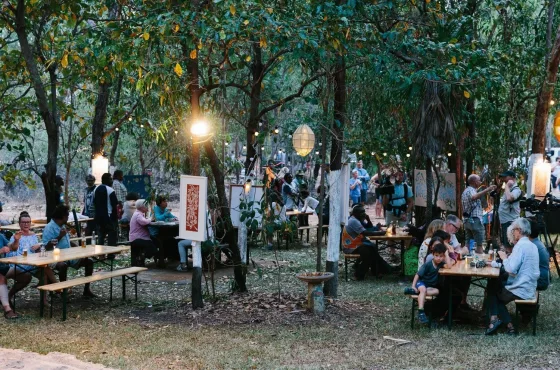
Kakadu - The Power of Country
Explore Travel: An Eye-Opening Journey into Ancient Kakadu
by John Hanscombe
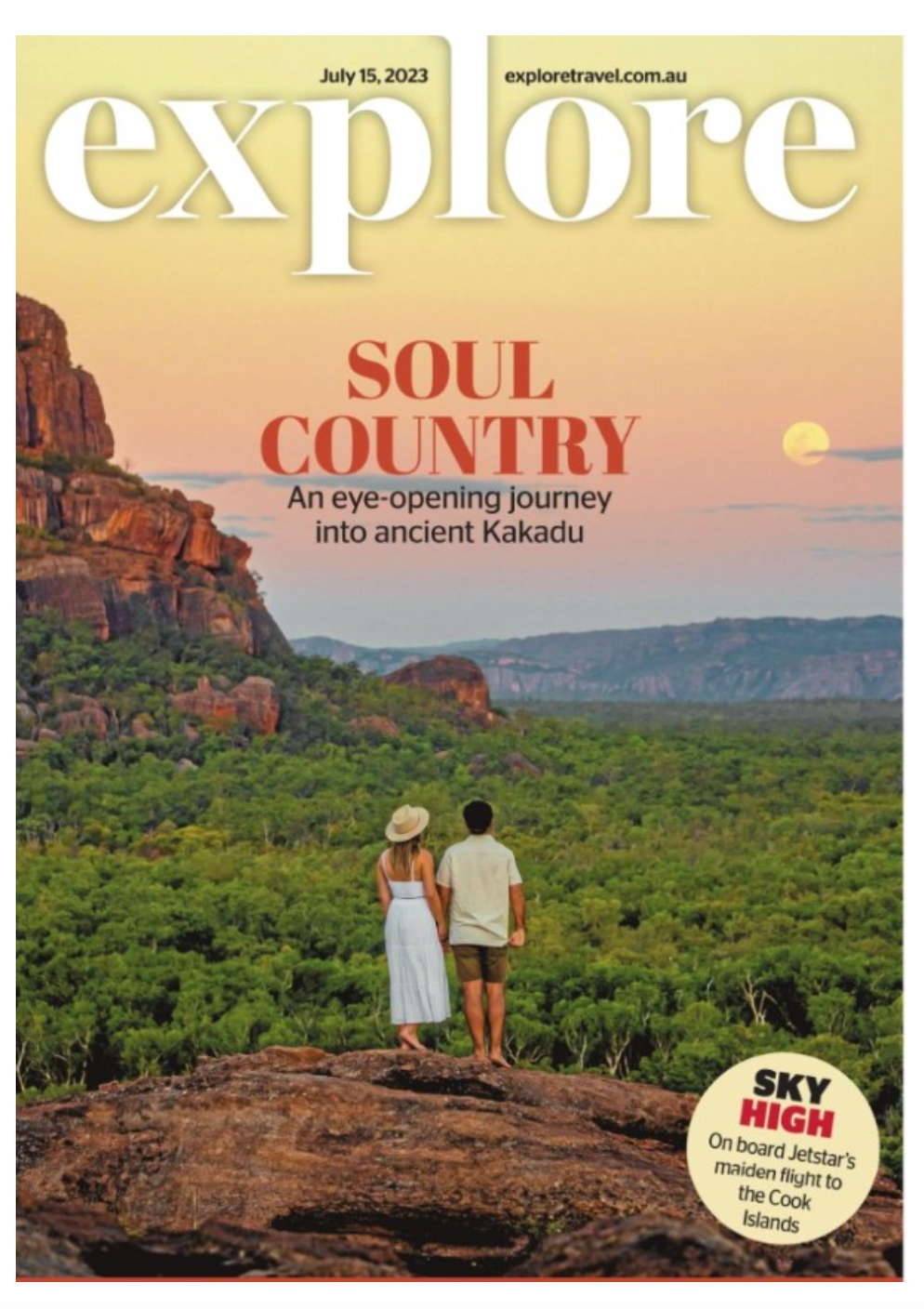
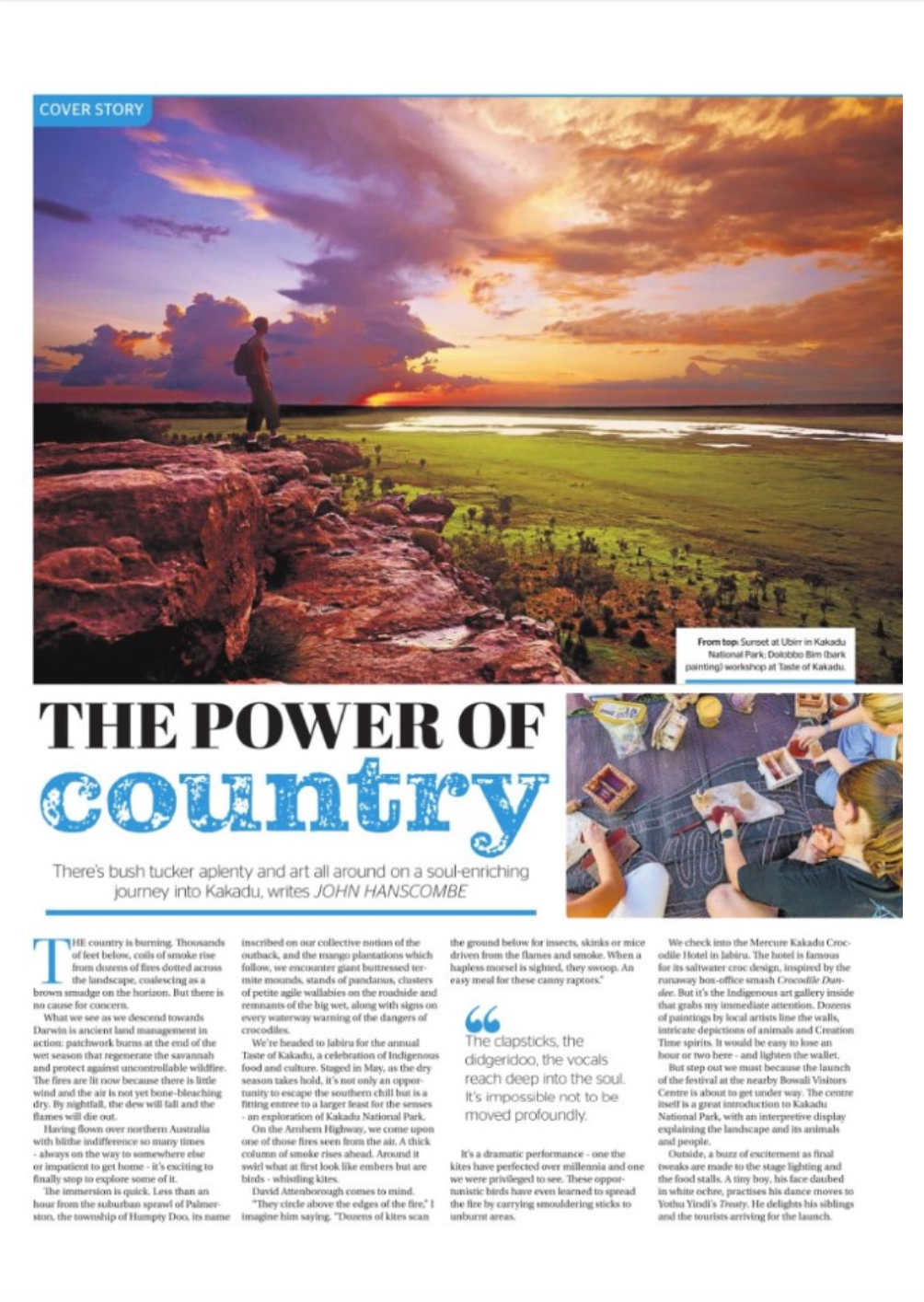
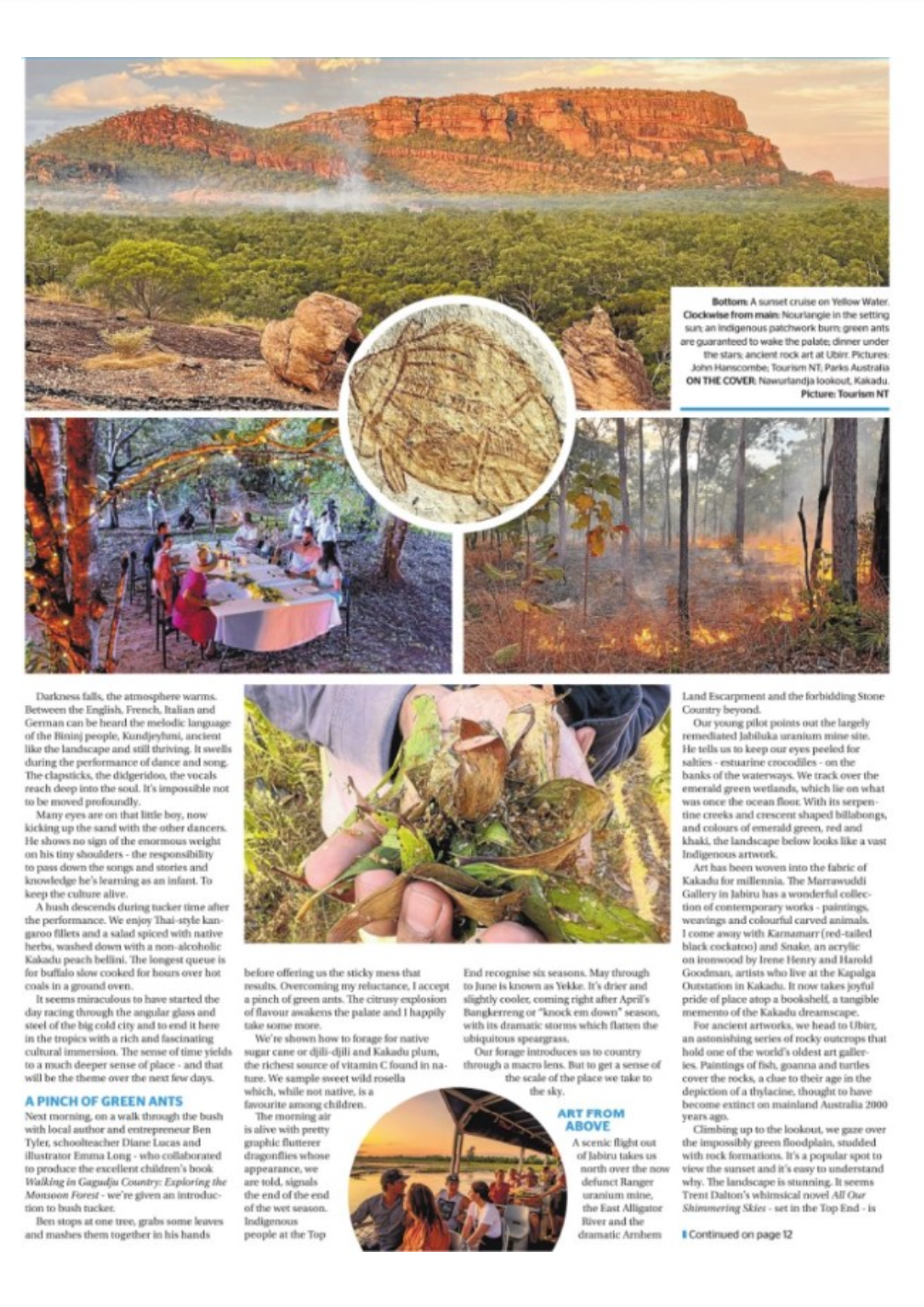
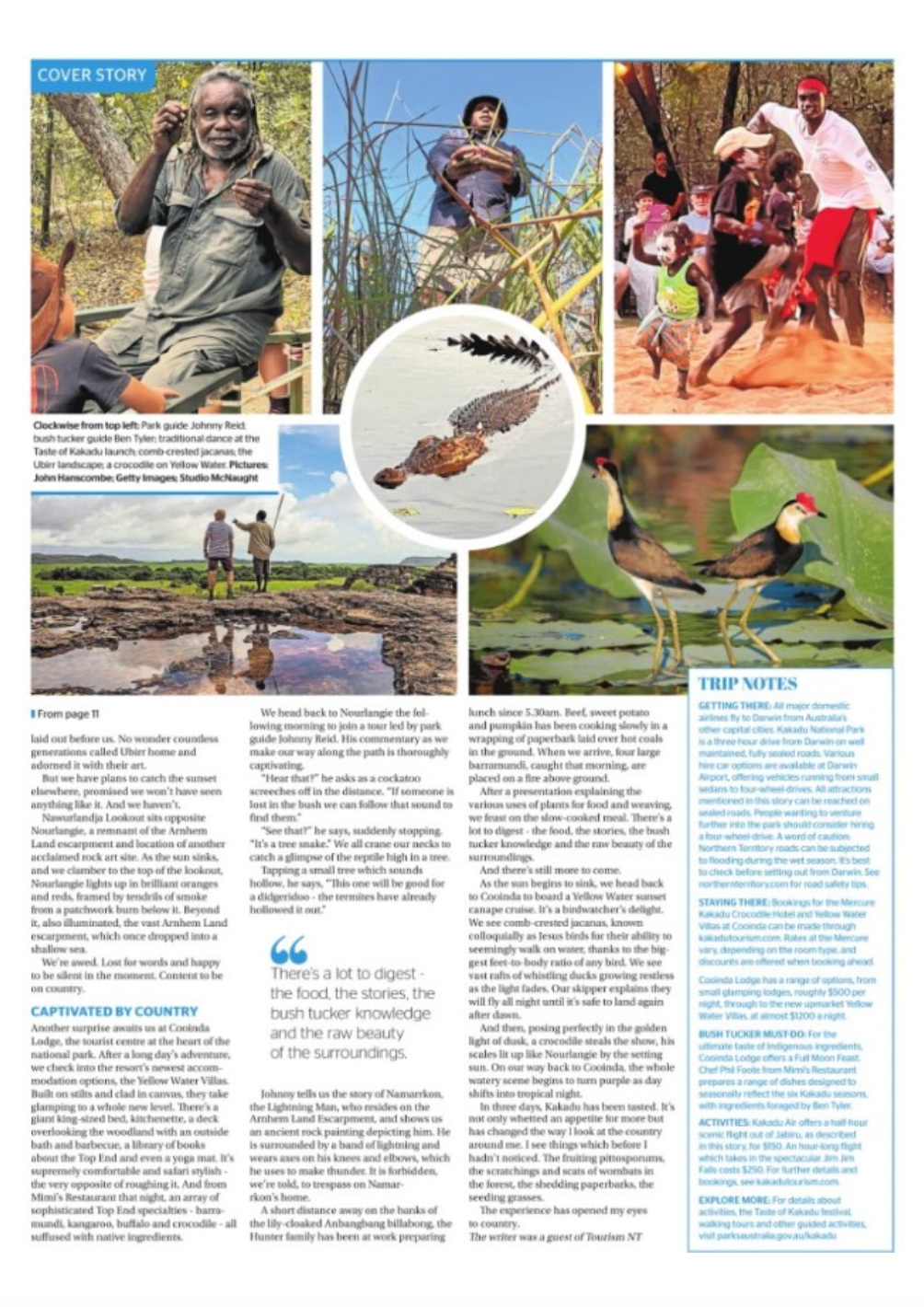
The country is burning. Thousands of feet below, coils of smoke rise from dozens f fires dotted across the landscape, coalescing as a brown smudge on the horizon. But there is no cause for concern. What we see as we descend towards Darwin is ancient land management in action: patchwork burns at the end of the wet season that regenerate the savannah and protect against the uncontrollable wild-fire. The fires are lit now because there is little wind and the air is not yet bone-bleaching dry. By nightfall, the dew will fall and the flames will go out.
Having flown over northern Australia with blithe indifference so many times always on the way to somewhere else or impatient to get home - it's exciting to finally stop to explore some of it. The immersion is quick. Less than an hour from the suburban sprawl of Palmerston, the township of Humpty Doo. Its name inscribed on our collective notions of the outback, and the mango plantations which follow, we encounter giant buttressed termite mounds, stands of pandanus, clusters of petite agile wallabies on the roadside and remnants of the big wet, along with signs on every waterway warning of the dangers of crocodiles.
We're headed to Jabiru for the annual Taste of Kakadu, a celebration of Indigenous food and culture. Staged in May, as the dry season takes hold, it's not only an opportunity to escape the southern chill but is a fitting entree to a larger feast for the senses - an exploration of Kakadu National Park. On the Arnhem highway, we come upon one of those fires seen from the air. A thick column of smoke rises ahead. Around it swirl what at first look like embers but are birds - whistling kites. David Attenborough comes to mind. "They circle above the edges of the fire" I imagine him saying, "Dozens of the kites scan the ground below for insects, skinks or mice driven from the flames of smoke. When a hapless morsel is sighted, they swoop. An easy meal for these canny raptors."
"The clapsticks, the didgeridoo, the vocals reach deep into the soul. It's impossible not to be moved profoundly."
It's a dramatic performance - one the kites have perfected over millennia and one we were privileged to see. These opportunistic birds have even learned to spread the fire by carrying smouldering sticks to unburnt areas. We check into Mercure Kakadu Crocodile hotel in Jabiru. The hotel is famous for its saltwater croc design, inspired by the runaway box-office smash Crocodile Dundee. But it's the Indigenous art gallery inside that grabs my immediate attention. Dozens of paintings by local artists line the walls, intricate depictions of animals and Creation Time spirits. It would be easy to lose an hour or two here - and lighten the wallet.
But step out we must because the launch of the festival at the nearby Bowali Visitors Centre is about to get underway. The centre itself is a great introduction to Kakadu National Park, with an interpretive display explaining the landscape and its animals and people. Outside, a buzz of excitement as final tweaks are made to the stage lighting and the food stalls. A tiny boy, his face daubed in white ochre, practices his dance moves to Yothu Yindi's Treaty. He delights his siblings and the tourists arriving for the launch....




